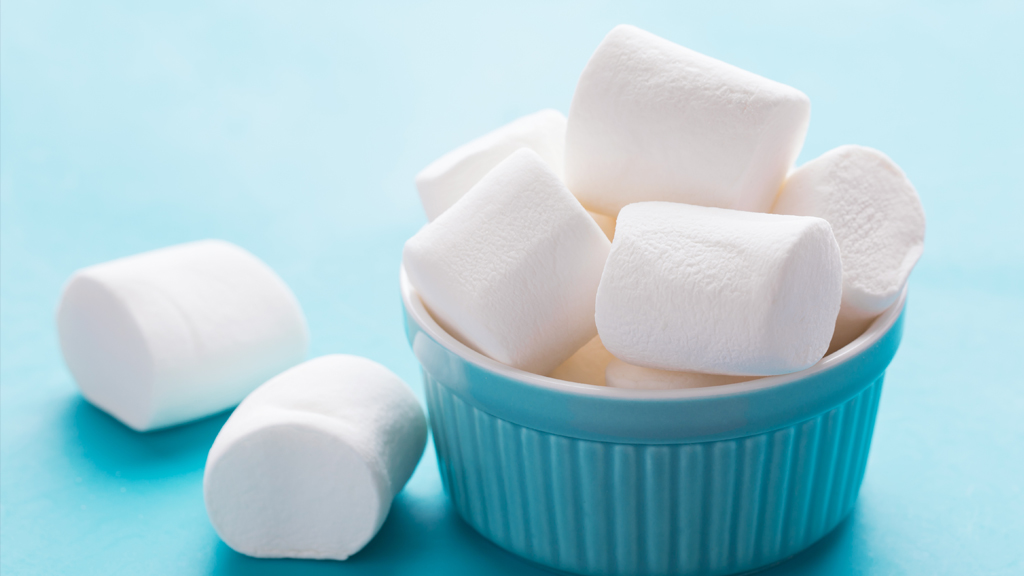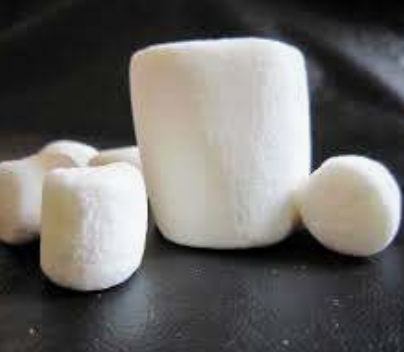Informal Education | Daily Do
What Happened to the Marshmallow?

Disciplinary Core Ideas Is Lesson Plan NGSS Phenomena Physical Science Science and Engineering Practices Informal Education
Sensemaking Checklist




Introduction
In today's Daily Do, What Happened to the Marshmallow?, families participate in a Dinner Table Discussion (see below) about the phenomenon of the expanding marshmallow. This sensemaking discussion has four parts:
- Families raise the question "What happened to the marshmallow?" by introducing the phenomenon of the expanding marshmallow. Students and their families observe how a marshmallow acts differently when you make cook them in the microwave versus outside over a fire, making careful observations about what they are seeing before during and after cooking.
- Families ask students to explain what they currently understand about what happens to a marshmallow when it heats up or 'cooked'.
- Families, prompt students to generate questions about what they see happen to a marshmallow when it is cooks. This will look different depending on how it is cooked, open flame versus the microwave.
- Families read an article and do an activity together to find some answers to their questions about how and why marshmallows react differently depending on how they are cooked.
What happened to the marshmallow?
Have you ever eaten an delicious gooey s'more? Have you ever wondered what exactly is a marshmallow? What is a marshmallow made of and why is it so spongy? You might have noticed that it doesn't always cook in the same way. Cooking a marshmallow in a microwave may make you ask, "What happened to the marshmallow?"
In today's Daily Do, we will figure out some things about the expanding marshmallow!

Introducing the Phenomenon & Raising the Question
Many students are familiar with marshmallows, but many might have never seen what happens to a marshmallow when you put it in the microwave. Introduce the phenomena by asking some probing questions and asking students to make some predictions. This could happen in two ways:
- If students are familiar with roasting a marshmallow over a fire, start by asking them to remember that experience. You can ask them questions such as, 'What did the marshmallow look like when you roasted it? What size/shape was it? Did it accidentally (or on purpose) get set on fire? What color was it when you were done?
- If students are not familiar with roasting a marshmallow over a campfire, play the How to Roast the Ultimate Marshmallow video. As students watch the video, have them make careful observations about what they see. You can ask them some of the same questions shared above.
You may want to have some marshmallows on hand for your students to investigate (and snack on) as you engage them in the next discussion. Prompt them with some leading questions, such as:
- What do you think a marshmallow is made out of?
- What do you notice about the shape and texture of the marshmallow?
Making Predictions
Next, tell students there are other ways to cook a marshmallow, like in a microwave. Have students make some predictions about how a marshmallow might cook in the microwave. Tell each student to make a Before, During, and After chart on a sheet of paper. Have students make some predictions about what they might observe before, during and after cooking the marshmallow in the microwave. Students should also include an explanation of what is going on with the marshmallow.
After students have recorded their predictions, play the marshmallow in microwave video below. The video is short so you might want to play it a few times. Another option to consider is to allow students to watch what happens first hand by cooking a marshmallow in the microwave. (Microwaves are designed to keep the radiation in, so it's safe to watch.)
Guidance: If you are working with younger children, you might want them to draw their predictions and then explain what they think is going on through discussion. If you have students that are familiar with what happens to a marshmallow when cooked in a microwave, press them to think about why they are seeing what they see. Many students will have seen a marshmallow in the microwave, but can not explain why it gets so big.
Tell us what you know...
Encourage your students to explain to you what they know (or think they know) about why marshmallows get so big in the microwave. Ask them, “Explain the science of why marshmallows expand in the microwave but not over the campfire." Students will attempt many varieties of explanations, but our goal here is not to distinguish between right and wrong answers or ideas. Rather, we want to foster discussion about how or why there are differences between cooking a marshmallow in a microwave and a campfire.
Accessing Prior Knowledge
Students may call on knowledge from previous grade levels during this part of the discussion.
- Early elementary (grades K-2) students may mention that they know when things 'cook' they can change. They might also talk about how the appearance changes when it is cooked. When it is cooked over the fire it turns colors but when it is cooked in the microwave it gets bigger but doesn't really turn colors.
- Upper elementary students (grades 3-5) may mention heating or cooling a substance can cause changes that can be observed. Sometimes these changes are reversible and sometimes they are not. They also may notice that it is more solid when it's room temperature and more 'liquid-y' when it is cooked.
- Middle or high school students may talk about energy, and how when (thermal) energy is added it changes the marshmallow somehow. Some may know that a marshmallow contains air and might think it expands because something is going on with the air.
All of these connections to ideas and learning opportunities at previous grade levels should be encouraged by asking follow up questions such as:
“Can you tell me more about that?”
“How do you know that?”
What questions do you have?
You can say something like “It sounds like we have more questions than answers. What questions do you have about how and why the marshmallow cooks differently in a microwave and campfire?” Encourage students to ask as many questions as possible that are relevant to the discussion.
Common questions could include:
-
Why does it change color in the fire?
-
Why doesn't it get super big over the campfire?
-
What is in the marshmallow that makes it get so big?
-
Why does it start to shrink when you take it out of the microwave?
-
What makes it so gooey when it gets hot?
Pursuing Common Questions
Read the Scientific American article Puffing Up Marshmallows (as a family or individually) and consider completing the activity in part or in whole as a family. High school students could engage in this activity independently. Younger students will need more assistance. After reading the article and completing the activity, ask your students the following questions:
-
What is one new thing you learned that you didn’t know before?
-
Which of our original questions did we answer by reading the article (and doing the activity)?
-
What other questions do you have about marshmallows, how they are made, and why are they fluffy?
Additional Activities: There are many investigations you can do with marshmallows! Consider engaging kids in some of the other investigations described below. These investigations can be done before or after the article is read.
- Have students kneed a marshmallow between their fingers until it is turns to a gooey, taffy-like consistency. Ask them to explain what they think is happening when the marshmallow is squeezed over and over.
- Make homemade marshmallows with your family or students. While you are making the marshmallows ask students to explain what they know about boiling, mixing and whipping.
- Put a marshmallow in a syringe (like one used to give medicine). Have students plug the end and then move the plunger and make observations about what happens to the marshmallow. Ask students how they think the marshmallow can change shape when nothing is touching it.
What happened to the marshmallow?
Now that we understand more about how and why marshmallows get so big in the microwave, it makes us wonder about how other things change when they get warmer. If you and your students would like to pursue another activity connected to this Dinner Table Discussion, check out the What happened to our ice? and/or the Why does some corn pop? Daily Dos.
NSTA Collection of Resources for Today's Daily Do
NSTA has created a What happened to the marshmallow? collection of resources to support teachers and families using this task. If you're an NSTA member, you can add this collection to your library by clicking ADD TO MY LIBRARY located near the top of the page (at right in the blue box).
Check Out Previous Daily Dos from NSTA
The NSTA Daily Do is an open educational resource (OER) and can be used by educators and families providing students distance and home science learning. Access the entire collection of NSTA Daily Dos.


